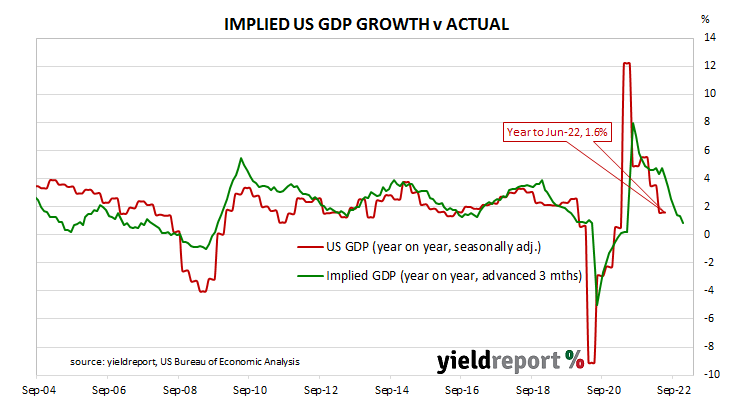Summary: Conference Board leading index down 0.4% in September, lower than expected; suggests recession “increasingly likely before year-end”; Conference Board forecasts 1.5% GDP growth in 2022; regression analysis implies 0.8% US GDP growth to December.
The Conference Board Leading Economic Index (LEI) is a composite index composed of ten sub-indices which are thought to be sensitive to changes in the US economy. The Conference Board describes it as an index which attempts to signal growth peaks and troughs; turning points in the index have historically occurred prior to changes in aggregate economic activity. Readings from March and April of 2020 signalled “a deep US recession” while subsequent readings indicated the US economy would recover rapidly. More recent readings have trended lower, implying implied lower US GDP growth rates.
The latest reading of the LEI indicates it decreased by 0.4% in September. The result was lower than the 0.3% fall which had been generally expected as well as August’s revised flat result.
“The US LEI fell again in September and its persistent downward trajectory in recent months suggests a recession is increasingly likely before year-end,” said Ataman Ozyildirim, Senior Director, Economics, at The Conference Board.
US Treasury bond yields moved considerably higher on the day. By the close of business, the 2-year Treasury yield had gained 12bps to 4.60%, the 10-year yield had added 11bps to 4.17% while the 30-year yield finished 10bps higher at 4.16%.
In terms of US Fed policy, expectations of a steeper path for the federal funds rate over the next 12 months firmed. At the close of business, November contracts implied an effective federal funds rate of 3.805%, 73bps higher than the current spot rate while December contracts implied 4.23%. November 2023 futures contracts implied an effective federal funds rate of 4.84%, 176bps above the spot rate.
Ozyildirim said The Conference Board’s current forecast for US GDP in 2022 is 1.5% “amid high inflation, slowing labour markets, rising interest rates and tighter credit conditions.” GDP growth in 2023 is expected to further slow in the first half.
Regression analysis suggests the latest reading implies a 0.8% year-on-year growth rate in December, down from November’s revised figure of 1.3%.



